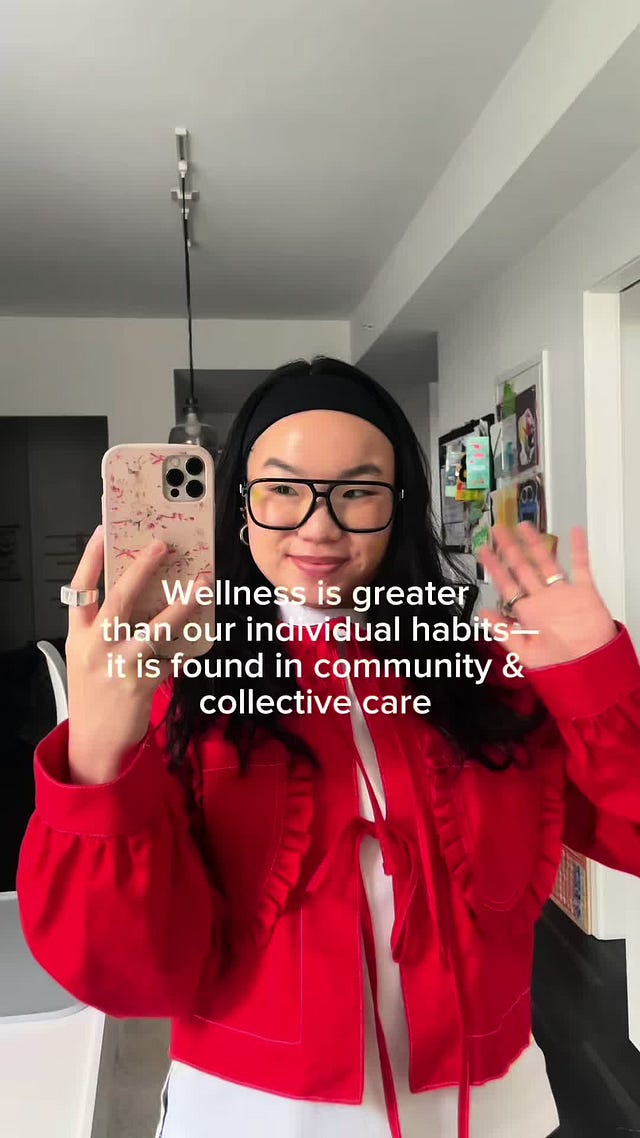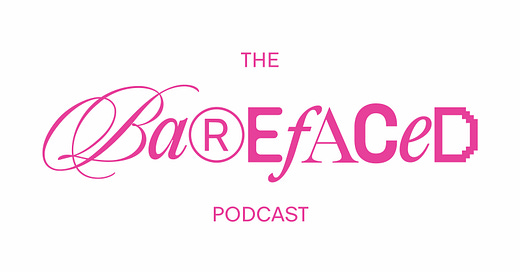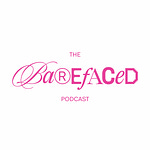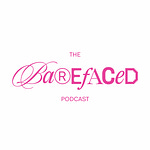In recent years, the global embrace of Japanese culture has been undeniable. From streetwear, homewares, and matcha to anime and video games, Japan's influence is everywhere. So why is Japanese beauty (J-beauty) still flying under the radar while Korean beauty (K-beauty) has taken the industry by storm?
This episode of The Barefaced Podcast is a deep dive into the Japanese beauty market. We start by unpacking the geopolitical and economic factors that have shaped the globalisation of K-beauty versus J-beauty, then break down their distinct differences. With this foundation, we analyse three key areas: consumer trends and behaviours, product, and retail.
Honestly, this episode could have—and probably should have—been split into two. Instead, I’ve packed everything beauty professionals need to know about Japan into one mega breakdown.
J-Beauty in the West
When I explored the K-beauty boom in a past episode, I found that South Korea’s export-driven economy played a key role. But Japan, a leader in automobiles, electronics, and tech, follows a similar model.
So why was I so familiar with K-beauty but not J-beauty? Something I missed in my research for that episode was Han Han-Ryeong, which translates to 'Korean Wave ban'.
Han Han-Ryeong, Korean Wave Ban
Odile Monod, an Art Director and Beauty Marketer based in South Korea created a brilliant YouTube video, "J-Beauty vs. K-Beauty: A Professional Reveals the Real Differences," where she breaks down the events that have shaped these two beauty industries.
Odile explains that in 2016 South Korea and the United States agreed to build a missile shield system to protect South Korea from the threat of North Korean attacks. China was not happy about this agreement, claiming that the system posed a threat to their national security. In retaliation, China imposed restrictions on South Korea, including bans on K-Pop, Korean dramas, and—critically—South Korean beauty imports. With China as South Korea’s largest beauty market, the impact was massive. Meanwhile, Japan capitalised on the shift, reviving its struggling economy and surpassing South Korea as China’s top cosmetic exporter in 2019.
Mind-blowing, right? To visualise this impact, I used data from The Observatory of Economic Complexity (by Datawheel) to create a bar chart animation of the battle between France, Japan, and South Korea for China’s top beauty importer from 2013 to 2023—the shifts are crazy.
When China restricted Korean cosmetic imports, a national push was made to grow K-beauty in the U.S., as it was comparable in size to the Chinese beauty market (by import value) and benefitted from being home to the largest group of South Koreans outside of South Korea.
However, from 2019 to 2021, U.S. beauty imports saw only modest growth, rising from $5B to $5.2B. Meanwhile, during the same period, Japan emerged as the top beauty importer to China, and Chinese beauty imports surged from $2.6B to $13.3B.
This focus on growing in the U.S. as a response to the restriction of South Korean imports is the reason why K-Beauty became so much more prominent in the West than J-Beauty. When viewed beyond a Western lens, it becomes clear just how massive Japan’s beauty industry truly is.
I have summarised key events on this timeline.
The ‘Trend’ of Japan
In the last decade, there has been a global embrace of Japan and its culture. There’s also the undeniable "cool factor" tied to anything Japanese. But what is it about Japan that draws such universal attraction?
Cultural Uniqueness
J.J. McCullough best explains the appeal of Japanese culture in his video ‘Why Does Everyone Like Japanese Culture So Much?’.
To summarise, Japan’s physical isolation and centuries of cultural protectionism have been key in preserving its distinct identity. For over 200 years, from 1640 to 1854, Japan was in a period called Sakoku, where the government shut itself off from the outside world. International trade was severely limited, foreigners were banned, and Japanese citizens were restricted from leaving. Japan was also one of the few Asian countries never colonised by Europeans, contributing to a fiercely independent, nationalistic identity. This sense of isolation and nationalism later fueled Japan’s fascistic phase, helping to start one of the worst wars in history.
This explains why people say visiting Japan feels like stepping into another world. But if cultural preservation alone was the only reason Westerners love Japan, many other countries could fit the bill. So, what else is it about Japan that fascinates the West?
Money!
Japan has been one of the world’s wealthiest countries since the 1960s. After the war, Japanese capitalism grew so strong that it created a large, powerful middle class known for its insatiable consumerism.
The core reason why Japan is so alluring: Japan makes and sells a lot of stuff. And Westerners love stuff. With Japan now open to the world, we've become major consumers of Japanese products. This is best encapsulated by the ongoing joke on social media that if you're visiting Japan, you should bring and empty suitcase.
Consumer Behaviours
In the name of research… I had to try a Japanese facial. The facial was amazing, but the best part was spending 90 minutes asking my facialist, a Korean expat, all my J-beauty questions. She explained that K-beauty is driven by innovation, with Koreans eager to try new products, while J-beauty is more cautious, focusing on clean and simple products. This was clear when I visited retailers and saw a growing trend in wellness products.
Wellness
Popular Japanese beauty retailer Cosme offers a range of wellness products, including essential oils, supplements, protein powders, teas, cordials, bath salts, crystals, lavender oils, and pillow sprays. The line between beauty and wellness was definitely blurred.
You can find images and videos of Cosme and all my in-store experiences here if you'd like to reference them.
Wellness in Japan makes sense because holistic practices are deeply ingrained in their culture. But this also speaks to a broader conversation about wellness—not just being about products you can buy or workout classes you attend. A TikTok that went viral last week from Kali Elizabeth highlights this.

 Tiktok failed to load.
Tiktok failed to load.Enable 3rd party cookies or use another browser
Japan’s wellness trend is expanding and entering drastically different climates in Australia, the US, and the UK. For instance, Mecca's new flagship in Melbourne will feature an entire wellness floor, while celebrities like Gwyneth Paltrow and Kourtney Kardashian are cashing in with brands like Goop and Lemme.
Luxury
In stark contrast to wellness, you can't discuss Japanese culture without mentioning luxury. While Western culture often prioritises independence and personal self-worth, Asian cultures—including Japan—place greater emphasis on interdependence and societal perception. This makes external markers, such as the brands you wear, far more significant.
This isn’t a full cultural analysis, but it’s important to highlight the common consumption of luxury in Japan.
Product
My understanding of J-beauty and K-beauty has primarily been shaped by Western social media, where only mass-distributed and cheaper products were trending. This led me to associate J-beauty with affordability, but that is far from the case. I was shocked by the amount of luxury beauty available in Japan.
Makeup
There was also a noticeable interest in makeup, with makeup counters in both department stores and drugstores attracting significantly more foot traffic than skincare. Additionally, there was a clear appreciation for artistry, evidenced by the presence of several upscale brush brands.
Many of the prestige brands felt familiar, showcasing how Japanese beauty both influences and is influenced by Western trends. Sleek, minimal, and cute, the products—despite their Japanese descriptions—could easily blend into a US Sephora visually.
Free-from & Vegan
"Free-from" marketing was another trend I noticed, communicated through icons on packaging. This trend transcends language, alongside symbols for cruelty-free and vegan products.
My facialist mentioned that Japanese consumers are increasingly interested in vegan products, which is significant since these couldn't be sold in China until 2021 due to mandatory animal testing—a key market for Japanese brands in the late 2010s, as we have established.
Between 2016 and 2020, Mintel found that vegan beauty products made up just 1-3% of product launches in Japan. While most consumers support avoiding animal-tested products, there’s still uncertainty about the safety of vegan beauty. This marks a key difference from the West, where cruelty-free has a universally positive connotation.
Retail
There has been a lot of talk about "beauty's return to retail" in the last few years post-COVID, and until visiting Tokyo, I don’t think I understood what people imagined this new world would look like or feel like.
Indie Beauty
In fashion, it's common for buyers to scout young brands in markets like Japan. However, in beauty, the brand must bear the heavy costs of expansion and regulatory compliance before even approaching retailers. There is a complete reversal of power. This stifles the number of creative, innovative, and 'cool' brands that international markets ever get to experience.
Beauty retailing is about securing the monopoly on the highest number of desirable brands. Retailers are less about selecting products based on innovation and more focused on ensuring they carry the most popular and sought-after names.
This shift has made discovering new brands a matter of searching the internet. However, with endless access comes intense saturation, making it harder for brands to stand out and for consumers to avoid feeling overwhelmed. With so many options, it’s easy to experience decision fatigue and revert to familiar brands and products you know and love. With the dismantling of traditional magazines beauty has lost its tastemakers and curation is no longer the driving force—it's all about trend.
Curation
Curation, however, is something that Tokyo's Harajuku suburb does brilliantly. Walking around these streets felt as though hundreds of brands had collectively decided to create a place of intentional retail experiences.
There were pop-ups for shoe brands with lines wrapping around the block, an Ami Paris store, Lacoste with a matcha cart, and Ralph Lauren serving coffee. What was especially notable was that the ‘cool kids’ weren’t priced out either, with countless Japanese streetwear brands scattered around.
The permanent retail spaces were gorgeous as well, but they were designed to be inviting and easy to navigate, rather than creating an exhibition-like experience meant to encourage photo-taking, which has become so popular in many beauty retail spaces, especially pop-ups.
It felt like stepping into your favourite fashion nerd’s Instagram feed or an architecture student’s project on the future of retail.
That concludes this week’s episode! I warned you that it was a big one… If you enjoyed this post or the podcast, be sure to give it a like and share it with a friend! Thanks for tuning in, and I’ll see you soon.
















Share this post